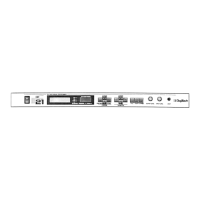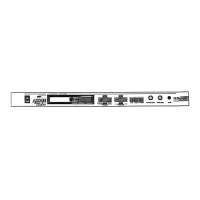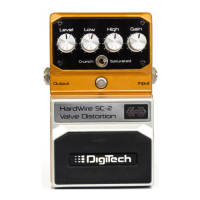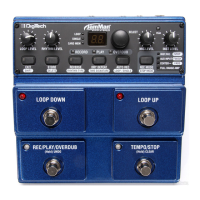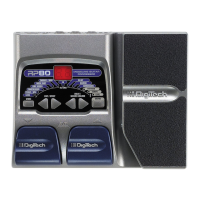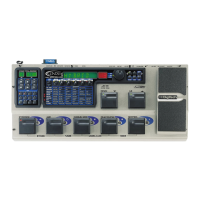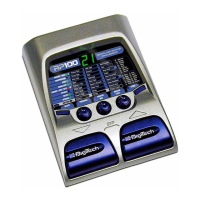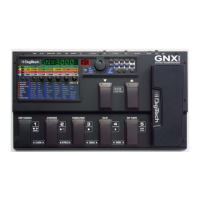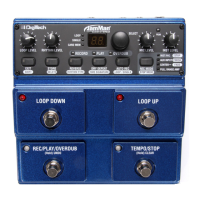36
FDBACK Parameter is what gives flangers their distinctive voice. Flangers are capable of
both positive and negative feedback loops, so experiment to find the sound you like best.
Ranges from -99% to 99%.
WvFrm Selects which waveform the LFO follows. Options for this control include sine, triangle, SP1
(Special 1), and SP2 (Special 2).The sine wave setting is probably the most easily recognized,
but the smooth response of the triangle wave or the intensity of SP1 or SP2 typically pro-
duce better results. See figure 4-2.
Dly A - B Controls the delay time of flange voice A or B. Shorter delay times produce a more dramat-
ic, deeper sweeping sound. Ranges from 0 to 60 milliseconds.
Out A - B Adjusts the overall level of flange voice A or B. Ranges from Off to 100%.
Pan A - B Controls the stereo soundfield placement of flange voice A or B. Ranges from -99 to 99.
Out L - R Controls the output level of the left or right side of the flanger. Ranges from Off to 100%.
PHASERS
The phaser or “phase shifter” as it is sometimes called, is a classic effect from the 70's that uses phase cancellation to
create a warm sweeping effect.The effect is created by making a copy of a signal and moving it in and out of phase
while mixing it with the original signal. As it moves, different frequencies are cancelled out creating a smooth curling
sound.There is also a feedback control that sends the shifting signal back into the phaser's input.This intensifies the
sound even more.
WHEN DO I USE A PHASER? This classic phaser effect is typically used with Guitars. A great example of
this can be heard most when you listen to music of the 70’s. Guitarist of the day loved their phasers. A phaser is
a great effect to use when playing clean and funky rhythms.
PHASER
PARAMETERS:
Dry: Lvl Controls the level of the dry (uneffected) signal. Ranges from Off to 100%.
Balance Controls the positioning of the dry signal in the stereo soundfield. Ranges from -99 (all left)
to 99 (all right).
Speed Controls the Low Frequency Oscillator (LFO) speed of the phaser. Ranges from 0.06 to
16.0 Hz.
Depth Controls the intensity of the phaser effect. High settings of DEPTH combined with high set-
tings of FDBCK produce dramatic, synth-like textures. Ranges from 0 to 30 milliseconds.
FdBck Controls how much of the flanged signal is fed back to the input of the Module.The
FDBACK Parameter is what gives phasers their distinctive resonating sound. Ranges from -
99% to 99%.
WvFrm Selects which waveform the LFO follows. Options for this control include sine, triangle, SP1
(Special 1), and SP2 (Special 2).The sine wave setting is probably the most easily recognized,
but the smooth response of the triangle wave or the intensity of SP1 or SP2 typically pro-
duce better results. See figure 4-2.
Out A - B Adjusts the overall level of phaser voice A or B. Ranges from Off to 100%.
Pan A - B Controls the stereo soundfield placement of phaser voice A or B. Ranges from -99 to 99.
Out L - R Controls the output level of the left or right side of the flanger. Ranges from Off to 100%.
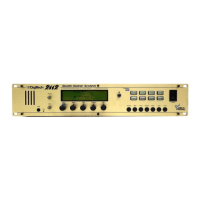
